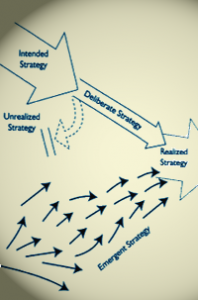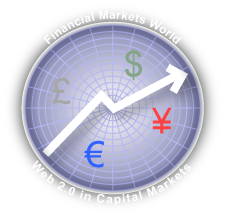Social Business Models
 Social business models are all built on the Social Channel of Value, which is currently usurping “value” away from product features. Sociology and anthropology studies consistently show that humans’ primary survival strategy is living in groups. Sociality is hard-coded into our DNA. We prize social experiences about almost anything else. The digitization of sociality is utterly transformational for us because it enables us to socialize far more. Social business models are all built on the Social Channel of Value, which is currently usurping “value” away from product features. Sociology and anthropology studies consistently show that humans’ primary survival strategy is living in groups. Sociality is hard-coded into our DNA. We prize social experiences about almost anything else. The digitization of sociality is utterly transformational for us because it enables us to socialize far more.
Service As Marketing (SvcMktg)
Old-style business runs Customer Service as a cost center whose operations it tries to minimize. Meanwhile, Marketing spends millions on TV models to rave about the company’s products. Service As Marketing (SAM) redefines both functions and makes them relevant in the Social Channel. Now, solving people’s problems in public digital social venues holds the key to displaying your products’ usefulness and your confidence and dedication to customers—to prospective customers. Transparent service is the best marketing, and when you do this right, customers help other customers solve problems.
First, the company creates a public online support community in which it encourages all […]
Firm History 
Photo credit: Ken Ohyama Also see Introduction or CSRA’s Brochure (PDF)
Although I founded CSRA in 2006, the firm has been a long time in the making, so I include some prior formative milestones as well. If you want a briefer treatment, see CSRA’s Facebook Page. If you’re interested in my personal milestones, see Founder Message.
Milestones Q1 2017—Launched Drive to Trust, a special program that gives firms the opportunity to be the first in their industries to build trust at scale. Q1 2017—Celebrated CSRA’s first decade in business with CSRA 11 Celebration videos in which I share reflections, lessons learned and where we’re going. CSRA Milestones highlights key engagements with some ups and downs of the business climate, 2006-2016. Q3 2016—Signed higher education client for social media strategy and pilot engagement that explicitly aims to build trust among their constituents. Q4 2015—Published the Social Channel App, beta edition, which shipped with two business applications, Customer Experience and Employee Engagement. Q4 2015—Published the first experiential social media case study, validating experiential’s commercial power. Our metrics outperformed best-in-class […]

Case Study Case Study: Knowledge Strategy for Global Electronics Firm Business Challenge
Global leader for communications and electronics was losing its leadership position due to an engineering-dominated culture and the inability to understand consumer markets. The Internet and rapid consumer adoption of wireless electronics had blindsided the company, which found itself unable to bring to market products that excited the consumer market.
Role
Dual role as strategy Subject Matter Expert for global knowledge vision and knowledge solution designer. Member of national engagement team comprised primarily of knowledge management (KM) consultants. Core team member, having helped to win the engagement.
Rollout
Played key role in adding market-oriented e-business thread to KM engagement with internal focus: introduced to the team the link between e-business and knowledge, adding dynamism to the engagement. Identified engineering culture disconnect with company’s sudden position in consumer limelight, and illustrated the necessity to adopt a consumer-focused initiative around knowledge. Advanced the idea that the company had to develop a new kind of knowledge to enable it to rapidly develop consumer knowledge with which to infuse engineering and marketing teams. Designed rapidly deployable […]

Case Study Case Study: Business Strategy for Supply Chain Software Startup Business Challenge
Provide strategic advice to visionary CEO of start-up aiming to revolutionize supply chain through a knowledge-based approach to collaboration.
Role
Principal strategy consultant and relationship manager. Extensive input on strategic alliances and forming working relationships with professional services firms.
Rollout
Advised CEO on broad array of strategic issues for Valley-based start-up operating in stealth mode. Scope encompassed value proposition, competitive position, build v. buy for the web-based software solution, go-to-market strategy. Introduced the company to several VCs, and provided professional opinions to VCs in their evaluations of the company. For the go-to-market strategy, advised on bowling pin client targets and timing of offerings in staged approach to drive adoption strategy. Helped to recommend strategic alliance partners, and suggested points of engagement.
Held numerous brainstorming sessions in which discussed vision, value proposition for client segments at various stages of adoption and launch plan. Co-developed marketing and engagement plans for professional service firm alliance partners.
Results Pilot implementations underway in several bowling pin clients. Management team consistently attaining milestones. On track for […]

Case Study Case Study: U.S. Launch of B2B Accelerator Business Challenge
Position late entrant consultancy’s accelerator in crowded market. Develop and leverage competitive advantages to overcome competitors’ lead in time to market.
Role
Director of Strategic Alliances with venture capitalists, law firms, Internet consultancies, marketing firms, executive recruiters, investment bankers, technology firms. Lead role in developing Accelerator’s engagement and delivery model.
Rollout
Rapidly galvanized multidisciplinary support around late entering Big Five accelerator launch. Conducted roadshow in which interviewed VCs, attorneys, incubators, marketers and recruiters known for successful portfolios of start-ups. Leveraged pre-existing network to invite select alliance prospects into beta alliance while soliciting their viewpoints on the accelerator/incubator market and advice on positioning the new accelerator. Developed on-point knowledge regarding competitive advantage vis à vis accelerators, incubators and Internet holding companies. By rapidly mobilizing alliances, quickly brought outside expertise into the accelerator, which enabled ramp-up of dealflow. Worked with launch team to pioneer accelerator model for several other locations worldwide.
Devised new accelerator engagement model that focused on managing start-ups’ and (corporate) Spin-outs’ life cycles by coordinating all resources to minimize transaction costs among alliance partners. Leveraged […]
 The Maple Leaf Digital Lounge has selected the Social Network Roadmap(SM) to build the social presence behind its launch, and CSRA has been working with their team for a few weeks. The Maple Leaf Digital Lounge (“MLDLCA”) is a virtual ecosystem that promotes discovery and collaboration among Canadian digital startups, foreign and Canadian investors and other enablers. Their mission is to facilitate cross-border high tech deals. “The Lounge” has two incarnations: several online venues combined with periodic physical events. Their launch event will happen on March 12 at the South by Southwest Interactive (“SxSW”) conference. Read on for my insights from working with them so far. The Maple Leaf Digital Lounge has selected the Social Network Roadmap(SM) to build the social presence behind its launch, and CSRA has been working with their team for a few weeks. The Maple Leaf Digital Lounge (“MLDLCA”) is a virtual ecosystem that promotes discovery and collaboration among Canadian digital startups, foreign and Canadian investors and other enablers. Their mission is to facilitate cross-border high tech deals. “The Lounge” has two incarnations: several online venues combined with periodic physical events. Their launch event will happen on March 12 at the South by Southwest Interactive (“SxSW”) conference. Read on for my insights from working with them so far.
Also see the case study in video and presentation formats, which illustrates the social business model, Digivents. Note, the case study uses the MLDLCA’s new name, North of 41.
[…]
Web 3.0 and Social Business—2011 Predictions and Recommendations describes a turning point, away from social media to social business. SocialTech Grows Up—Relationship the Foundation of Business Success—Digital Clodhoppers Become Sore Thumbs.
 2011 will mark a turning point in the adoption of digital social technologies because the experimentation phase is drawing to a close, and stakeholder expectations are increasing. Organizations and people will no longer gain attention by executing badly. At the enterprise level, participation will wane in venues and initiatives that have no business strategy, focus, content strategy and commitment. Paying inexperienced people or agencies to “share” snappy content will expose brands as digital clodhoppers and push customers away. Individuals will also have to improve their game and focus on the most relevant people in their networks. Stop sending default invitations on LinkedIn. Proactively support people whom you respect and trust the most. The theme is determining and executing on strategy, focus and commitment. 2011 will mark a turning point in the adoption of digital social technologies because the experimentation phase is drawing to a close, and stakeholder expectations are increasing. Organizations and people will no longer gain attention by executing badly. At the enterprise level, participation will wane in venues and initiatives that have no business strategy, focus, content strategy and commitment. Paying inexperienced people or agencies to “share” snappy content will expose brands as digital clodhoppers and push customers away. Individuals will also have to improve their game and focus on the most relevant people in their networks. Stop sending default invitations on LinkedIn. Proactively support people whom you respect and trust the most. The theme is determining and executing on strategy, focus and commitment.
In 2011, the bar to attract and hold attention will be higher, which will present organizations with a new threat: when participation falls, some executives will conclude that […]
2009 year in review: insider’s knowledge of Web 2.0 adoption, enterprise 2.0, enterprise twitter, facebook for business, enterprise linkedin, the economy and social networking platforms. Case studies, analysis and practical advice for bypassing competitors. […]
Over-Publicized Problems and Unusual Opportunities—A Way to Monetize Collaboration?
 Financial Markets World held its conference, Web 2.0/Enterprise 2.0 in the Capital Markets Industry, in New York City on 17 September 2007. Invited as a panelist on the bleeding edge track, “Web 3.0: Where Are We Going,” I nonetheless had time to scribble some notes to cover some of the sessions. Financial Markets World held its conference, Web 2.0/Enterprise 2.0 in the Capital Markets Industry, in New York City on 17 September 2007. Invited as a panelist on the bleeding edge track, “Web 3.0: Where Are We Going,” I nonetheless had time to scribble some notes to cover some of the sessions.
Enterprise 2.0 is being adopted by investment banks and the capital markets industry, but adoption is being dampened by two flies in the ointment: 1) the industry is highly regulated, and compliance forces firms to have control of their data, which means CIOs are hesitant to try new technology that may introduce risk; 2) enterprise 2.0 doesn’t yet have a locked and loaded business case. It’s early, and all conference sessions reflected that.
The Global Human Capital Journal’s coverage comprises summaries of all the sessions, as well as more in-depth coverage of three of the sessions. To access all the articles in one click, use the Financial Markets World tag. This article contains the summaries as well as my analysis and conclusions of […]
Rebooting Kraft—CEO Outlines Growth Strategy clearly shows the innovation imperative: A Play in Two Acts, Starring the Consumer.
 Irene B. Rosenfeld, Chairman & Chief Executive Officer of Kraft Foods, outlined her vision for relaunching Kraft at the Executives’ Club of Chicago’s Chicago CEO Breakfast on May 30, 2007 at the Mid-America Club. She was enthusiastic about the company’s second lease on life: having spun off of Altria this spring, the company is newly independent, and she was eager to share her plan to drive growth by addressing the “eye of the consumer.” Irene B. Rosenfeld, Chairman & Chief Executive Officer of Kraft Foods, outlined her vision for relaunching Kraft at the Executives’ Club of Chicago’s Chicago CEO Breakfast on May 30, 2007 at the Mid-America Club. She was enthusiastic about the company’s second lease on life: having spun off of Altria this spring, the company is newly independent, and she was eager to share her plan to drive growth by addressing the “eye of the consumer.”
Kraft Foods is the second largest food company in the world and the largest in North America. It has seven brands that produce revenue of over $1 billion and fifty that bring in over $100 million each. Central to her strategy is leveraging Kraft’s formidable brand portfolio and other economies of scale. Rosenfeld “came home to Kraft” about a year ago, having had highly visible leadership roles at the company in the past and the top job at Frito-Lay immediately prior.
[…]
|
|
 Social business models are all built on the Social Channel of Value, which is currently usurping “value” away from product features. Sociology and anthropology studies consistently show that humans’ primary survival strategy is living in groups. Sociality is hard-coded into our DNA. We prize social experiences about almost anything else. The digitization of sociality is utterly transformational for us because it enables us to socialize far more.
Social business models are all built on the Social Channel of Value, which is currently usurping “value” away from product features. Sociology and anthropology studies consistently show that humans’ primary survival strategy is living in groups. Sociality is hard-coded into our DNA. We prize social experiences about almost anything else. The digitization of sociality is utterly transformational for us because it enables us to socialize far more.




 The Maple Leaf Digital Lounge has selected the Social Network Roadmap(SM) to build the social presence behind its launch, and CSRA has been working with their team for a few weeks. The Maple Leaf Digital Lounge (“MLDLCA”) is a virtual ecosystem that promotes discovery and collaboration among Canadian digital startups, foreign and Canadian investors and other enablers. Their mission is to facilitate cross-border high tech deals. “The Lounge” has two incarnations: several online venues combined with periodic physical events. Their launch event will happen on March 12 at the South by Southwest Interactive (“SxSW”) conference. Read on for my insights from working with them so far.
The Maple Leaf Digital Lounge has selected the Social Network Roadmap(SM) to build the social presence behind its launch, and CSRA has been working with their team for a few weeks. The Maple Leaf Digital Lounge (“MLDLCA”) is a virtual ecosystem that promotes discovery and collaboration among Canadian digital startups, foreign and Canadian investors and other enablers. Their mission is to facilitate cross-border high tech deals. “The Lounge” has two incarnations: several online venues combined with periodic physical events. Their launch event will happen on March 12 at the South by Southwest Interactive (“SxSW”) conference. Read on for my insights from working with them so far. 2011 will mark a turning point in the adoption of digital social technologies because the experimentation phase is drawing to a close, and stakeholder expectations are increasing. Organizations and people will no longer gain attention by executing badly. At the enterprise level, participation will wane in venues and initiatives that have no business strategy, focus, content strategy and commitment. Paying inexperienced people or agencies to “share” snappy content will expose brands as digital clodhoppers and push customers away. Individuals will also have to improve their game and focus on the most relevant people in their networks. Stop sending default invitations on LinkedIn. Proactively support people whom you respect and trust the most. The theme is determining and executing on strategy, focus and commitment.
2011 will mark a turning point in the adoption of digital social technologies because the experimentation phase is drawing to a close, and stakeholder expectations are increasing. Organizations and people will no longer gain attention by executing badly. At the enterprise level, participation will wane in venues and initiatives that have no business strategy, focus, content strategy and commitment. Paying inexperienced people or agencies to “share” snappy content will expose brands as digital clodhoppers and push customers away. Individuals will also have to improve their game and focus on the most relevant people in their networks. Stop sending default invitations on LinkedIn. Proactively support people whom you respect and trust the most. The theme is determining and executing on strategy, focus and commitment. Financial Markets World held its conference, Web 2.0/Enterprise 2.0 in the Capital Markets Industry, in New York City on 17 September 2007. Invited as a panelist on the bleeding edge track, “Web 3.0: Where Are We Going,” I nonetheless had time to scribble some notes to cover some of the sessions.
Financial Markets World held its conference, Web 2.0/Enterprise 2.0 in the Capital Markets Industry, in New York City on 17 September 2007. Invited as a panelist on the bleeding edge track, “Web 3.0: Where Are We Going,” I nonetheless had time to scribble some notes to cover some of the sessions. Irene B. Rosenfeld, Chairman & Chief Executive Officer of Kraft Foods, outlined her vision for relaunching Kraft at the Executives’ Club of Chicago’s Chicago CEO Breakfast on May 30, 2007 at the Mid-America Club. She was enthusiastic about the company’s second lease on life: having spun off of Altria this spring, the company is newly independent, and she was eager to share her plan to drive growth by addressing the “eye of the consumer.”
Irene B. Rosenfeld, Chairman & Chief Executive Officer of Kraft Foods, outlined her vision for relaunching Kraft at the Executives’ Club of Chicago’s Chicago CEO Breakfast on May 30, 2007 at the Mid-America Club. She was enthusiastic about the company’s second lease on life: having spun off of Altria this spring, the company is newly independent, and she was eager to share her plan to drive growth by addressing the “eye of the consumer.”